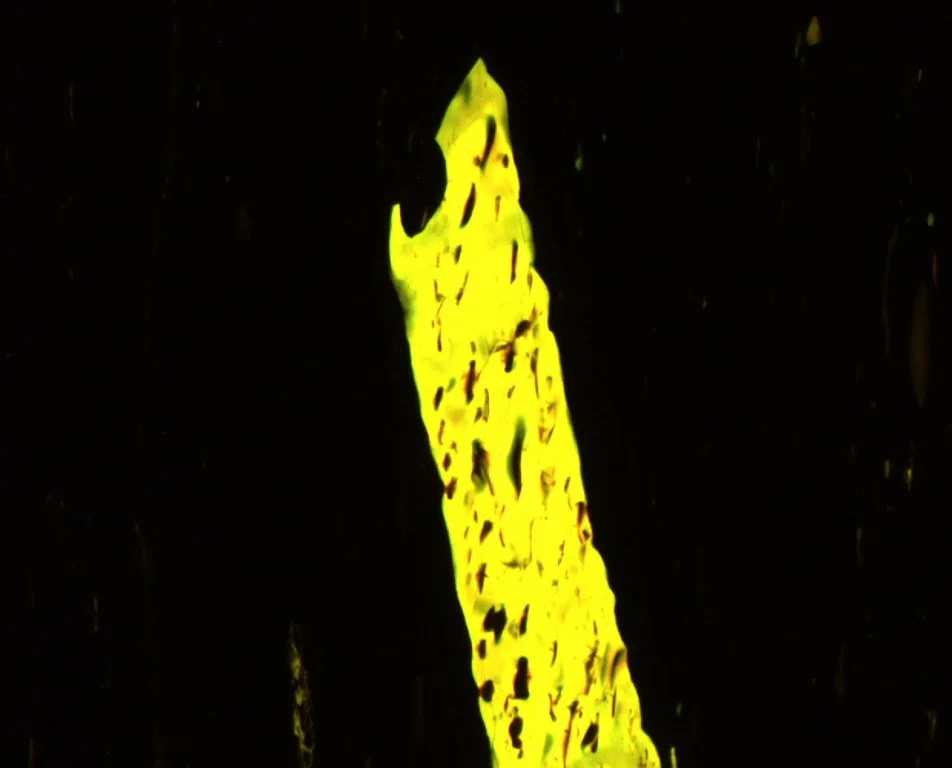The Society of Reflective Personalities - Resinite
The Holistic Healer
Personality:
Resinite believes every fragment can be mended if you meet it with warmth. She moves through the group with a quiet, sunlit calm, sealing tiny fractures no one else has the patience to notice. Her glow under fluorescence isn’t vanity, it’s the gentle radiance of someone who’s always absorbing and softening the sharp edges around her.
When someone in the group shows a few cracks, she appears with a calm, resin-scented wisdom and just enough viscosity to hold everything together. She protects without smothering, soothes without insisting, and somehow manages to make even Collodetrinite stop grumbling for a moment. She and Secretinite have a complicated past, both shaped in the secretory chambers of ancient plants, though one kept her warmth while the other turned inward and opaque. She never mentions it, but Collotelinite swears there’s something unspoken between them.
She isn’t naive, she simply believes that resilience grows best when tended carefully. And if she occasionally sticks to things more than she means to… well, that’s just part of the healing process.
Scientist’s Note:
Resinite is a liptinite maceral formed from fossilised plant resins and other hydrogen-rich exudates. In polished section it occurs as rounded droplets, lens-shaped bodies, pore fillings, or vein-like accumulations. Its reflectance is low at low rank, but its fluorescence is distinctive: bright yellow to orange under UV or blue light, gradually reddening and diminishing with increasing rank. This warm fluorescence is one of its key diagnostic features.
Chemically, resinite is rich in aliphatic and terpene-derived structures, resulting in some of the highest hydrogen indices among liptinites. Because of this composition, it contributes significantly to liquid hydrocarbon potential in coals and dispersed organic matter, with generation beginning relatively early in maturation (around ~0.4% Rr). At higher rank, resinite may lose fluorescence and approach vitrinite reflectance values, though its morphology usually remains visible.
Botanically, resinite originates mainly from conifer resins, but similar exudates can occur across a range of resin-producing plants. It may also incorporate other plant secretions that entered the peat during growth, injury, or decay, explaining its occurrence in fractures, cell lumina, and veinlets.
Scientist’s note based on:
Pickel, W., Kus, J., Flores, D., Kalaizidis, S., Christanis, K., Cardott, B.J., Misz-Kennan, M., Rodrigues, S., Hentschel, A., Hamor-Vido, M., Crosdale, P., Wagner, N., ICCP, 2017. Classification of liptinite – ICCP System 1994. International Journal of Coal Geology 169, 40–61.
Other references of interest:
Crelling, J.C., 1995. The petrology of resinite in American coals. In: Anderson, K.B., Crelling, J.C., Eds. Amber, Resinite, and Fossil Resins. ACS Symposium Series Vol. 617. Chapter 12, 218-233.
Hower, J.C., O’Keefe, J.M.K., Volk, T.J., Watt, M.A., 2010. Funginite-resinite association in coal. International Journal of Coal Geology 83, 64-72.
Khorasani, G.K., Murchison, D.G., 1988. Order of generation of petroleum hydrocarbons from liptinic macerals with increasing thermal maturity. Fuel 67, 1160-1162.
And if you want to dig deeper into the plant structure:
Langenheim, J. H., 2003. Plant Resins: Chemistry, Evolution, Ecology, and Ethnobotany. Timber Press.








